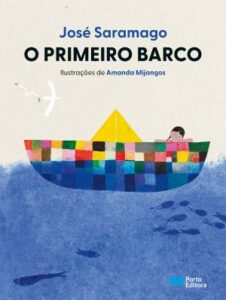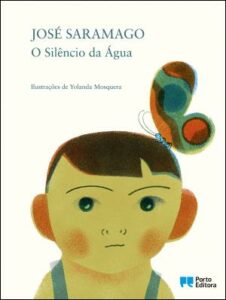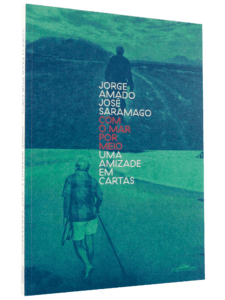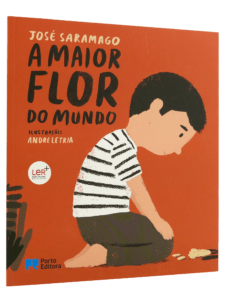The Year of 1993
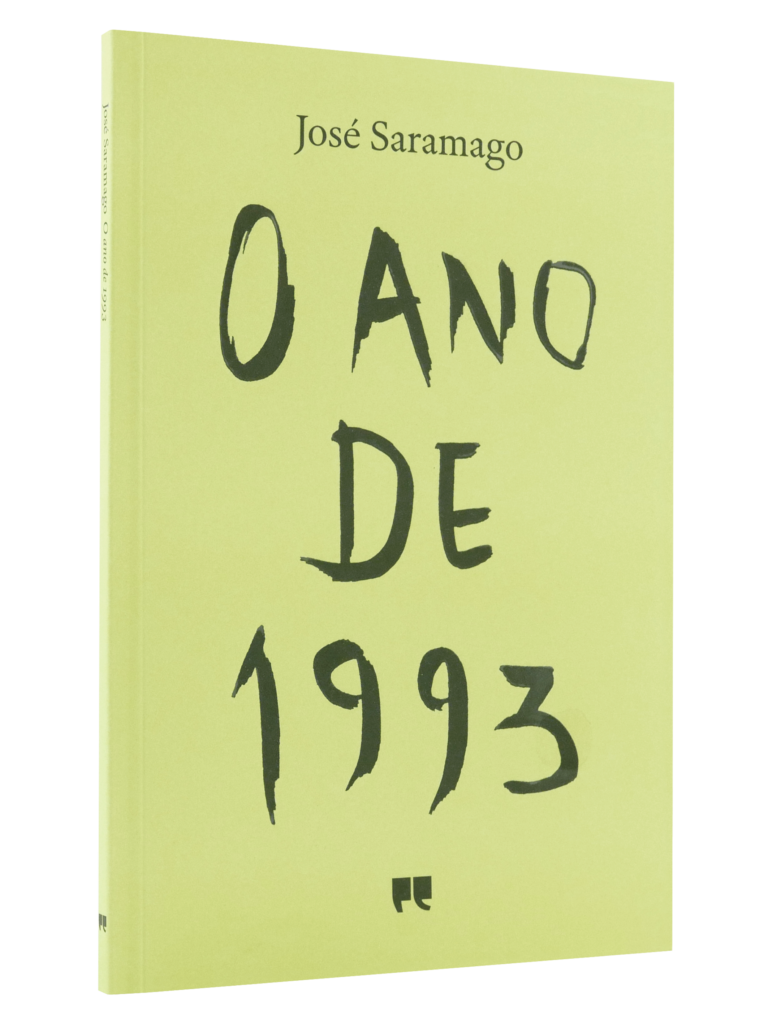
I began writing it before April 25th. It was out of desperation that I started it. Then came the Revolution, and the book seemed to have lost its meaning. If, as they said, fascism was dead, why talk anymore about dominators and dominated? We know today that fascism is alive, and I did my duty by publishing the book.
Foundation
Portugal
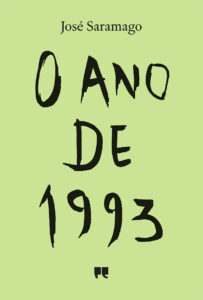
The calligraphy on the cover is by the writer José Manuel Mendes.
They are small stories that form one. One and intact. Poetry already building bridges to fiction. No rhyme, phrasing, talking about the future of the author's own writing. Poems of warning, but also of hope, despite the despair that resides in their still lyrical and initiatory background. «The interrogation of the man who left the house after curfew started a fortnight ago and is still not over / The interrogators ask one question every sixty minutes twenty-four a day and demand fifty-nine different answers for each one / It's one new method / They believe that it is impossible not to be the true answer among the fifty-nine that were given / And they rely on the perspicacity of the computer to find out which one it is and its connection with the others / (…) / The man who left home after curfew will not say why he left / And the inquirers do not know that the truth is in the sixtieth answer / However the torture continues until the doctor declares / It is not worth it."
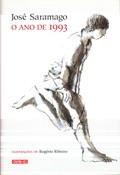
Editorial Path
2007 (illustrations by Rogério Ribeiro)
Language
Portuguese
First published in 1975, this reissue by Caminho, twenty-two years later, is accompanied by drawings by the painter Rogério Ribeiro. They are small stories forming a single, unified, and intact work. Poetry already building bridges to fiction. Without rhyme, phrased, speaking of the future of the author's own writing. Poems of warning, but also of hope, despite the despair that resides in their still lyrical and initiatory core. “The interrogation of the man who left home after curfew began fifteen days ago and is not yet over / The interrogators ask a question every sixty minutes, twenty-four a day, and demand fifty-nine different answers for each one / It’s a new method / They believe it’s impossible for the true answer not to be among the fifty-nine that have been given / And they count on the computer operator’s perspicacity to discover which one it is and its connection to the others / (…) / The man who left home after curfew will not say why he left / And the interrogators do not know that the truth lies in the sixtieth answer / Meanwhile, the torture continues until the doctor declares / It’s not worth it.”

Editorial Path
1987 (illustrations by Graça Morais), 3rd ed.
Language
Portuguese
First published in 1975, this reissue by Caminho, twenty-two years later, is accompanied by drawings by the painter Rogério Ribeiro. They are small stories forming a single, unified, and intact work. Poetry already building bridges to fiction. Without rhyme, phrased, speaking of the future of the author's own writing. Poems of warning, but also of hope, despite the despair that resides in their still lyrical and initiatory core. “The interrogation of the man who left home after curfew began fifteen days ago and is not yet over / The interrogators ask a question every sixty minutes, twenty-four a day, and demand fifty-nine different answers for each one / It’s a new method / They believe it’s impossible for the true answer not to be among the fifty-nine that have been given / And they count on the computer operator’s perspicacity to discover which one it is and its connection to the others / (…) / The man who left home after curfew will not say why he left / And the interrogators do not know that the truth lies in the sixtieth answer / Meanwhile, the torture continues until the doctor declares / It’s not worth it.”

Future
1975
Language
Portuguese
Future
1975
Argentina

Alfaguara2010 (Trans.: Ángel Campos Pámpano)
(included in the Complete Poesía work)
Language
Spanish
«"Let's close this door.".
Slowly, slowly, in our caigan clothes
As if they were undressing themselves.
And we are what we are, even if we are human.»
Foundation
This volume brings together, in a bilingual edition, all the poetry produced by the 1998 Nobel Prize winner for Literature: from the first poems written to the twenty-first year to the book The Year of 1993, published in 1975, a volume that contains themes and obsessions that became the spinal column of his novelistic work.
Philosophical poems, love poems about literary characters and about the contemporary world, in all of them the identity of this maestro of universal literature is discovered.
Brazil
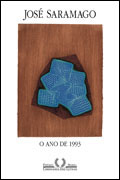
In *The Year 1993*, the reader will find a different, but no less brilliant, José Saramago. Instead of the flowing style of his best-known novels, Saramago employs a synthetic writing style, made of ellipses and suggestions, on the threshold between narrative prose and poetry. In an unnamed world, where cities have been destroyed, occupied by ferocious wolves, or dominated by obscure invading forces, anonymous characters move in hordes through fields, mountains, and deserts. Although the action takes place in the year 1993 (which at the time of writing was in the future), they seem to traverse eras of human history, from prehistory to the present day. In this strange scenario, men unlearn and relearn how to control fire, forget and recover the meaning of love, and bionic animals are developed for purposes of persecution and political oppression. Unleashed imagination and rigorous writing create the charm of this singular parable. Although not strictly written in verse, but rather in short sentences with extreme freedom of syntax and punctuation, The Year 1993 is usually classified as the author's third and final book of poetry. It can be seen as the transition to narrative prose that, in the following decades, would enchant readers all over the world.
Spain
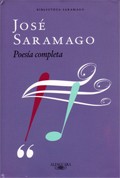
2005; 2011 (Saramago Library Collection) (Translated by: Ángel Campos Pámpano)
(included in the Complete Poesía work)
Language
Spanish
Let's close this door.
Slowly, slowly, in our caigan clothes
As if they were undressing themselves.
And we are what we are, even if we are human.
Foundation

2005; 2011 (Saramago Library Collection) (Translated by: Ángel Campos Pámpano)
(included in the Complete Poesía work)
Language
Spanish
Let's close this door.
Slowly, slowly, in our caigan clothes
As if they were undressing themselves.
And we are what we are, even if we are human.
Foundation
Italy
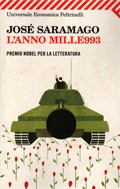
2012 (Translated by Domenico Corradini H. Broussard) Available as an e-book
Language
Italian
The great “epic per aphorism” of the Portuguese Nobel Prize. A lotta race for freedom that inspires all the rivoluzione dei Garofani ma va oltre, verse la lotta di tutti i popoli, in tutti i tempopi.
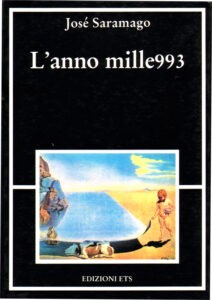
ETS
1993 (Trans.: Domenico Corradini H. Broussard)
Language
Italian
ETS
1993 (Trans.: Domenico Corradini H. Broussard)

Einaudi
2001 (Trans.: Domenico Corradini H. Broussard)
Language
Italian
Trasognate prose poetiche o hallucinanti poemi in prosa, i trenta capitoli dell'Anno mille993 appaiono caratterizzati, almeno al principio, da un tempo presente que confers a ogni segment a static immobilità, a timeless aura and strongly symbolic. Negative utopia, vision of a future of nefarious and inevitable derivation, quest'opera di Saramago parrebbe riallacciarsi in the title of Orwell's 1984. But if Orwell's cosmovision was born from a delusion by the drift in the authoritarian sense of socialist revolution, the nucleus of Saramago's first inspiration is, as always, his opposition to the Salazarist regime. Even if, in the definitive structure of the book, it was realized during the fallout of fascism in Portogallo, it was a concern that gave its test a universalistic character based on the project that began in 1974, proper to the vigil of the «rivoluzione dei garofani». Ad accentuare que esta connotazione universalista dell'opera c'è anche la sua dimensione pittorica. Writing sensitively to the visual art, Saramago conceives his strange text as a succession of diapositive sceltes in a settore within the delimitation of the European picture (Dalí, De Chirico) and proiettate in a static lore with a white wall with an oniric automatism capable of blocking in a luce materica le immagini evoke space.
